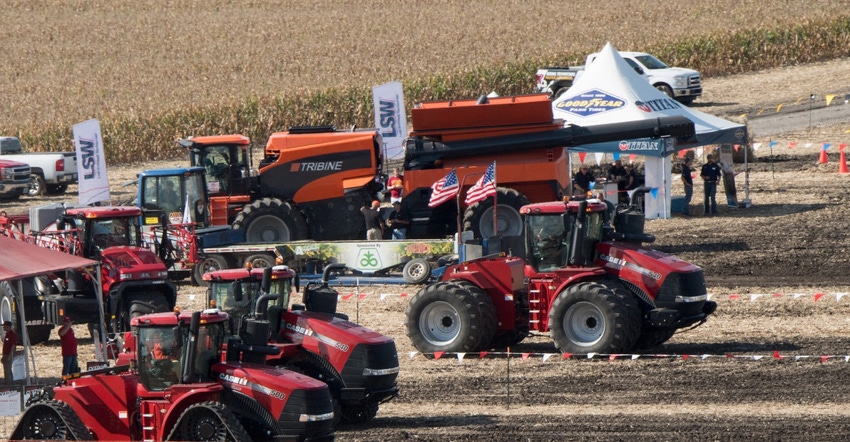AEM reports positive overall February U.S. ag equipment sales, although Canada struggled some.

U.S. sales of agricultural tractors and combines remained in the plus column for February, according to the latest sales data from the Association of Equipment Manufacturers (AEM). In addition, there’s some growing optimism in the agricultural economy.
Total U.S. two-wheel-drive tractor sales grew 17.3% in February 2019 compared to February 2018, led by a 24.6% gain for under-40 hp machines and a 7.1% gain for 40-100 hp two-wheel-drive tractors, while 100 hp-plus two-wheel-drive-tractors recorded a drop of 2.2%.
U.S. sales of four-wheel-drive tractors gained 29.5% in February compared to last year, and U.S. self-propelled combine sales for February grew 21.5%.
Canada did not fare as well, with February gains only for self-propelled combines (up 25%) and under-40 hp two-wheel-drive tractors (up 23%).
“We remain concerned about some of the Canadian numbers in February’s report,” said Curt Blades, AEM senior vice president, AG services.
In a recent column on the future of agriculture, Blades noted that there is still reason for optimism looking into 2019 and beyond.
“Farming is a long-term, capital-intensive business,” Blades wrote. “A farmer must feel optimistic about the future in order to make capital investments in new equipment. Farmers are naturally optimistic -- they have to be to plant a crop and have faith that it will produce their income -- but over time, uncertainty erodes this built-in farmer optimism.”
Blades said looking back at 2018, the agricultural market can be summed up in one word: uncertainty. “This time last year, the ag market – specifically the ag equipment market – looked very promising. Our industry was celebrating tax reform, decreased regulations and a commodity market starting to show some signs of recovery,” he wrote.
However, that positive momentum didn’t last long, as the industry began to hear rumblings about changes in the Renewable Fuel Standard that could dramatically reduce corn demand. “This was quickly followed by the announcement of steel and aluminum tariffs that would not only increase the price of our raw materials but would also lead to retaliatory tariffs on U.S. ag exports in one of our most important markets for soybeans and other major commodities. Adding to this uncertainty drama was a looming expiration of the 2018 farm bill, with its important safety net for those who purchase the products we manufacture. In short, a year full of uncertainty,” Blades said.
However, with 2018 over, the year ahead offers some opportunity for hope. “It is pretty easy to once again be optimistic. This uncertainty in the ag market is showing signs of resolution,” he wrote in his column.
“We’re encouraged to hear [U.S. Department of Agriculture] estimates that net farm income is expected to increase slightly in 2019 after last year’s declines; hopefully, that signifies some optimism in the U.S. as the year moves forward,” Blades said.
Farmers are awaiting implementation of the new farm bill, looking forward to the year-round sales of E15 fuel and hopeful about renewed soybean trade relations with China. “We hope that the new U.S. farm bill will provide more certainty for farmers as they plan ahead. However, we are still facing a lack of real, sustained progress on trade agreements and ending retaliatory tariffs,” Blades added.
He explained, “Overall, the passage of the farm bill should go a long way towards clearing up some of that uncertainty facing farmers as they consider investing in farm equipment.”
Blades said several AEM representatives had a sit-down meeting with Environmental Protection Agency Administrator Andrew Wheeler in December specifically to discuss year-round sales of E15. The outcome of the meeting lines up with statements made by the Administration and USDA that this is to be approved prior sometime in early 2019. “This development, once solidified, should provide some much-needed certainty for corn demand,” Blades said.
Blades said AEM has been an outspoken critic of the steel and aluminum tariffs while specifically pointing out the concern with retaliatory tariffs on U.S. agricultural goods.
“There are definitely indications that the rest of 2019 will provide more certainty for the U.S. ag economy. This should be good news for our industry and equipment manufacturing,” Blades concluded.
About the Author(s)
You May Also Like



.png?width=300&auto=webp&quality=80&disable=upscale)

